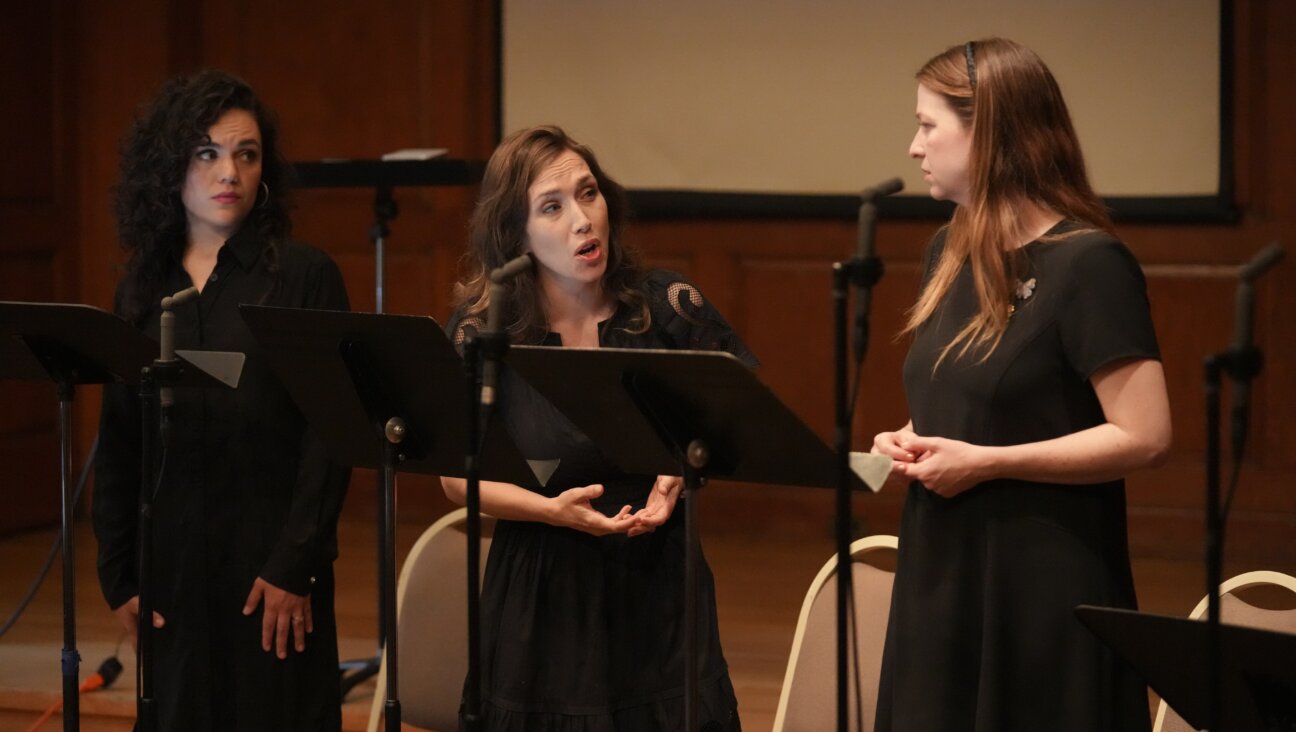Reading Kafka’s Love Letters as a Key to His Mind
Kafka: The Decisive Years
By Reiner Stach, translated from the German by Shelley Frisch
Harcourt, 592 pages, $35.
* * *|
‘I am nothing, absolutely nothing,” declared Franz Kafka, who longed to contract his life into a perfect sentence. Eighty-one years after his death, we’ve got plenty of nothing. Posthumous publication of thousands of pages of his letters, diaries and fiction fragments transformed an obscure Jewish insurance manager who lived in Prague but spoke German into an icon of the 20th century, one of the very few mortals whose name became a common adjective. Indeed, there is something Kafkaesque about the mere existence of a scholarly outfit called the Kafka Society of America, and about worldwide attention to the life of a frail, neurasthenic man who died at 40 and barely had a life. He struggled to write about a hapless immigrant named Karl Rossmann, but the title he assigned his incomplete novel, “The Man Who Disappeared” (commonly known in the United States as “Amerika”), might best describe its author. “My life consists, and has essentially always consisted, of attempts at writing, largely unsuccessful,” he wrote.
The writing includes nine complete stories, fewer than three-dozen other prose pieces, three unfinished novels, 1,500 letters and an extensive journal. But the writing about Kafka and his writing is more voluminous than one could count; typing “Franz Kafka” into a search engine yields more than 130,000 Web sites just in English, a language that Kafka never learned.
Yet, though he has been scrutinized more attentively than Henry James, Virginia Woolf or Marcel Proust, Kafka has not been as fortunate in biography, until now. Reiner Stach, a Kafka scholar based in Hamburg, dismisses the vast Talmud of commentary on his subject. Since, as he avers, “no definitive biography of Franz Kafka exists,” Stach sets out to provide one, in three volumes. The first of those volumes, “Kafka: The Decisive Years,” does not begin in 1883, with the author’s birth; its prologue is set on the evening of May 18, 1910, when Kafka and a few friends gather to observe Halley’s Comet. The rest of the book covers 1912-1915, a period crucial to shaping the course of Kafka’s fiction and, in part because of him, of modern literature. For glimpses of Kafka’s childhood, Stach refers us to Klaus Wagenbach’s “Franz Kafka: Pictures of a Life” (1984) and to the day when access to the papers of Kafka’s friend Max Brod will make a definitive portrait less impossible. His current task, meanwhile, is simply “to explain how a consciousness that is set thinking by everything could evolve into a consciousness that set everyone thinking.”
Stach is mindful that he has set his mark on an elusive life. For him, the most telling words are found in the 511 letters and postcards that Kafka sent to Felice Bauer, a young professional woman employed by an office machine company in Berlin. On the evening of August 13, 1912, which, Stach contends, “changed the face of German-language literature, of world literature,” Kafka met Bauer at a dinner hosted by Brod. During the course of a lively conversation, the two resolved to visit Palestine together. Through a prolific exchange of correspondence between Kafka in Prague and Bauer in Berlin, a nuptial alliance was established and eventually dissolved. Kafka’s tortured thoughts and second thoughts about marrying Bauer set the conditions for his most intense spurts of creativity. Stach situates “The Judgment,” “Metamorphosis,” The Man Who Disappeared” and ‘The Trial” within the years when the works’ author was agonizing over whether to commit himself to bourgeois domesticity.
Calling Kafka’s Letters to Felice “a colossal document,” Stach contends: “The volume’s linguistic compactness and self-reflexive intensity are without parallel in any extant correspondence.” And he analyzes these letters — the ones from Felice have been lost — as the most useful key to Kafka’s thoughts and actions during the decisive years of his emergence as a writer. But he also recognizes that reliance on epistolary evidence creates gaps and distortions in the account. We can only speculate, for example, about what went on at the gathering held in Berlin on Easter Sunday, 1914, to celebrate the Kafka-Bauer engagement; since the principals and their friends and family attended, no one needed to recount the proceedings in a letter. The written record also scants the many hours that Kafka — a devotee of fresh air, vegetarianism and natural medicine — spent rowing, swimming and doing calisthenics.
Instead of the kind of running narrative typical of popular biography, Stach ends up providing meta-biography, a midrash on the life rather than an illusion of the life itself. Translated from the German by Shelley Frisch (herself a biographer, of Erika Mann) into fluent American English, Stach’s seasoned reflections on Kafka’s texts constitute a richly detailed parallel life — an existence drawn from and through words. Given the
vast amount of sense and nonsense already published on the subject, it is tempting to feel nostalgic for the pristine experience of encountering for the first time, in 1915, the astonishing sentence about Gregor Samsa’s transformation into a monstrous vermin. Stach finds it easy to “envy Kafka’s earliest readers, who knew very little about his life and could enjoy his work as literature and not as an accumulation of autobiographical codes.” But since hermeneutic innocence can never be recovered, he offers the most complete and reliable guide to that accumulation.
Though he follows a rough chronology, Stach proceeds by examining clusters of themes that accompany Kafka’s passage through his late 20s and early 30s. He has much of value to say about Central European café culture, the German publishing industry, changing tastes in domestic furniture, and causes and consequences of the Great War. Stach discusses the nature of the Jewish middle class and why Westernized Jews were discomfited by a raffish Yiddish theater troupe that descended on Prague from primitive Galicia. Kafka was not, and he befriended them. He also took an interest in the nascent Zionist movement, showing up in Vienna at the 11th International Zionist Congress in September 1913. However, he came to the Austrian capital on other business, to participate in the second International Congress for Rescue Services and Accident Prevention.
Stach glosses the professional reports and papers that Kafka wrote as an employee of the Prague Workers’ Accident Insurance Institute, where he worked daily until 2 p.m. Late afternoons meant a reluctant visit to the asbestos factory his family owned and that he was expected to oversee. During the wee hours of the night, after his parents and three sisters had gone to bed, Kafka would cherish the chance to pursue the solitary literary craft that was the reason for the fascination with his life. “All his major texts,” Stach writes, “are about people facing a mystery that is both impenetrable and absorbing.” In his examination of Kafka during the years he wrote most of his major texts, this excellent biographer is a man facing a man facing a mystery.

I hope you appreciated this article. Before you go, I’d like to ask you to please support the Forward’s award-winning, nonprofit journalism during this critical time.
Now more than ever, American Jews need independent news they can trust, with reporting driven by truth, not ideology. We serve you, not any ideological agenda.
At a time when other newsrooms are closing or cutting back, the Forward has removed its paywall and invested additional resources to report on the ground from Israel and around the U.S. on the impact of the war, rising antisemitism and the protests on college campuses.
Readers like you make it all possible. Support our work by becoming a Forward Member and connect with our journalism and your community.
Make a gift of any size and become a Forward member today. You’ll support our mission to tell the American Jewish story fully and fairly.
— Rachel Fishman Feddersen, Publisher and CEO
Join our mission to tell the Jewish story fully and fairly.























